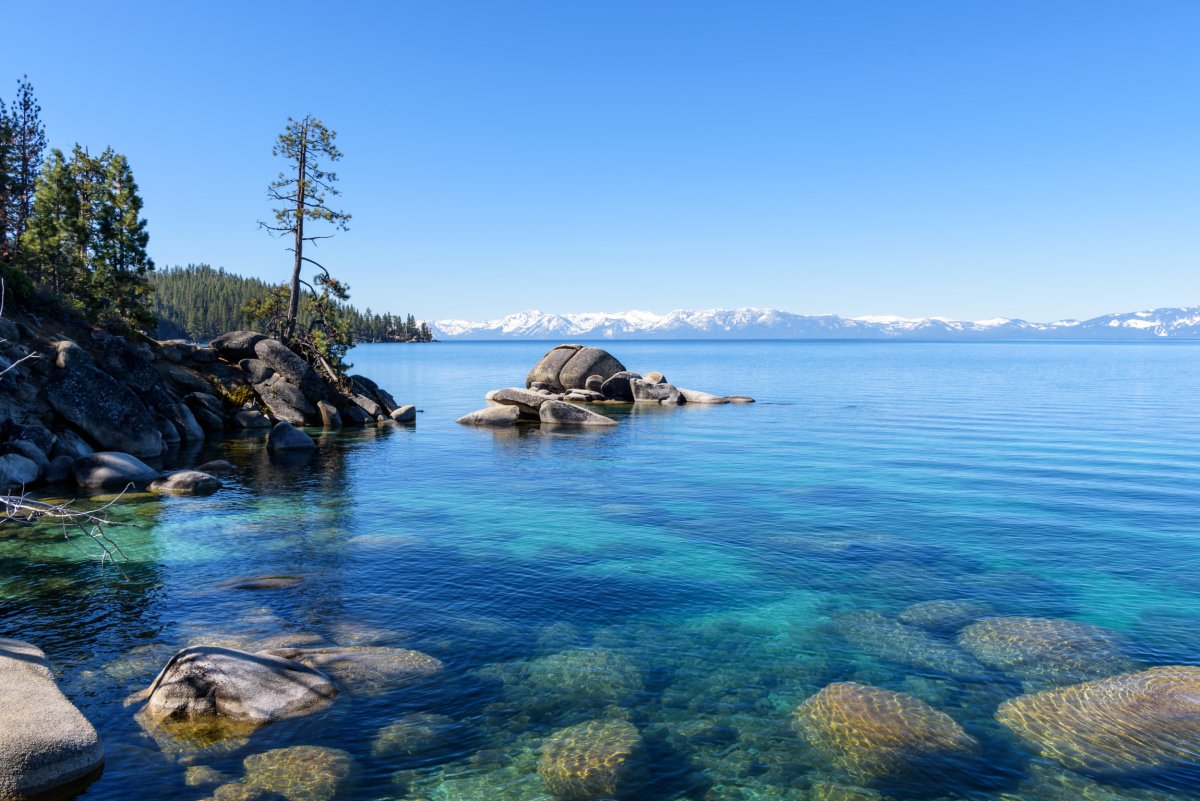For the first time, the amount of plastic litter hiding inside Lake Tahoe has been investigated, and the results aren’t good.
The popular tourist spot on the northern California/Nevada border contains several thousands of pieces of plastic litter, coming from a wide range of sources, according to a new paper in the journal Applied Spectroscopy.
Researchers from the Desert Research Institute (DRI) and the UC Davis Tahoe Environmental Research Center found that the lake contained an average of 83 pieces of plastic litter per km, or 133 per mile, with some locations containing higher numbers locally. The lake itself is around 191 square miles in area.
ISTOCK / GETTY IMAGES PLUS
This is the first time that a survey has been done in Lake Tahoe investigating larger chunks of plastic waste: previous work has found that Tahoe contains large numbers of microplastics, which are tiny fragments of plastic less than 0.2 inches across. Microplastics find their way into nearly every place on Earth, falling in the rain and even being breathed in by humans.
In the oceans, marine mammals and sea birds often die as a result of consuming plastic litter, leading to potential poisoning or starvation, as well as becoming tangled in fishing gear or bottle rings.
“There’s very little work on submerged plastic litter in lakes,” paper co-author Monica Arienzo, an associate research professor of hydrology at DRI, said in a statement. “And I think that’s a real issue, because when we think about how plastics may be moving in freshwater systems, there’s a good chance that they’ll end up in a lake.”
The plastics were discovered by research divers, who counted the number of plastic pieces within transects along stretches of the lake bed, covering a total of around 6 miles. The 516 samples of plastics were then brought to the surface, where they were tested for the type of plastic that they contained, and their original form determined.
The researchers found that the plastics were most commonly found to come from food containers, plastic bags, toys, and plastic bottles. Others included fragments from fishing gear, gloves, rope, cutlery, cigarettes, and plastic buoys, while many of the other items found could not be classified.
The types of plastic that the litter was made of included polyvinyl chloride (PVC), polystyrene/expanded polystyrene (packaging), polyethylene terephthalate/polyester, polyethylene (often found in plastic bottles), polypropylene (bottle caps), and polyamide (plastic fabrics).
Knowing where the plastics came from can hopefully help prevent more of them from entering the lake, and also help elucidate where many of the microplastics in the lake may have originated, the researchers say.
“When we study microplastics, we only have the chemical information, or the plastic type,” paper co-author Julia Davidson, who was an undergraduate student in Arienzo’s lab, said in the statement. “We don’t know where it came from—a plastic bag, toy, or otherwise—because it’s just a tiny piece of plastic. But now we can use this litter data to point to the dominant types of plastics and compare them to microplastic data.”

ISTOCK / GETTY IMAGES PLUS
The authors of the study hope that these findings will help influence litter policies, leading to bans of certain plastic types. One example of this includes South Lake Tahoe’s 2022 ban on single-use plastic bottles.
“I think one of the things that’s really cool about this project is the collaboration between DRI, Clean Up the Lake, and UC Davis at Tahoe,” Arienzo said. “It demonstrates the power of bringing together a nonprofit that really wants to clean up Tahoe, while collecting data in the process that can help answer scientific questions.”
“There’s a lot of education we can do, as well as continuing to work on reducing the use of those plastics. Because we have to start thinking about turning that plastic pipe off.”
Do you have a tip on a science story that Newsweek should be covering? Do you have a question about plastic litter? Let us know via [email protected].

Uncommon Knowledge
Newsweek is committed to challenging conventional wisdom and finding connections in the search for common ground.
Newsweek is committed to challenging conventional wisdom and finding connections in the search for common ground.


